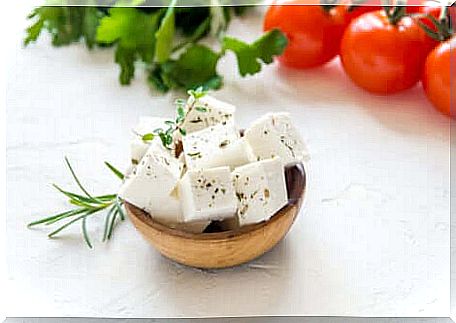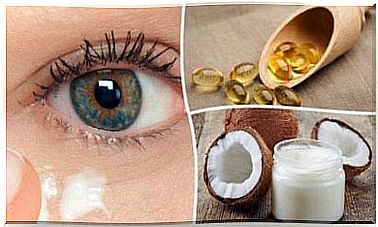Nutritional Properties Of Feta
Have you ever heard of feta? This dairy product originating in Greece is very interesting for the health of the people. Discover its benefits and uses.

Feta is a dairy product originating in Greek culture which has gradually spread to other countries thanks to its versatility and properties. This food is sold in brine, which increases its shelf life.
Feta is made from sheep’s milk, but it can also be found with mare’s milk as the main ingredient. This cheese is characterized by a tangy flavor and a high percentage of fat in relation to the total calories. In addition, it is generally sold in wooden boxes, or in tin or aluminum packaging which retain its organoleptic qualities.
Nutritional properties of feta
Like any other dairy product, feta is distinguished above all by its protein content, according to current scientific literature. These are nutrients with a high biological value that contain all the essential amino acids and are very digestible.
The contribution of proteins becomes fundamental to prevent pathologies associated with aging and the degeneration of muscle tissue. An article published in the journal Nutrients ensures that the consumption of protein manages to delay and prevent the destruction of lean tissue as well as the loss of its functionality.
As if that were not enough, feta also contains a high proportion of saturated fatty acids in its composition. Until recently, this was considered bad news. However, science has changed its position on this issue.
Saturated fat is no longer considered harmful. Nowadays, we recognize the benefits of their consumption. There is enough evidence to say that intake of these fatty acids is effective in reducing cardiovascular risk as well as the incidence of other complex diseases.

It contains many macronutrients
The macronutrient contribution of feta cheese is important and representative. But it also contains minerals and vitamins that are beneficial for health. An example is calcium.
It has been demonstrated that the ingestion of dairy products may reduce the risk of osteoporosis, according to the calcium content of the products. Therefore, feta cheese is not an exception regarding this mineral.
On the other hand, it contains a large dose of vitamin D in its composition. This nutrient is essential to maintain a correct state of health. As well as for the prevention of complex, cardiovascular and metabolic pathologies.
In addition, certain types of cancer have a better prognosis when the levels of vitamin D in the body are adequate. The influence of this vitamin on the oncological pathology of the skin is also known.
Paradoxically, vitamin D is one of the most deficient nutrients in the general population. To ensure your daily intake, it is important to consume dairy products (such as feta), blue fish and eggs. In addition, it is recommended to expose yourself to the sun regularly in order to stimulate endogenous synthesis.
Recipes with feta
We offer two simple recipes with feta to start introducing this food into your diet routine.
In the oven
Feta can be cooked in the oven, like provolone. With the simple combination of spices, such as oregano, thyme and pepper, a drizzle of olive oil and the dish is ready.
The only thing missing is to put the feta in the oven for eight minutes on hot air at a temperature of 200 degrees. When removing from the oven, it is advisable to add a drizzle of extra virgin olive oil.
Feta salad
Salads are a great excuse to introduce feta. Just cut the cheese into small squares and add them to the vegetable mixture.
Then add a little oil and vinegar to get a rich and nutritious salad. If you want to put more emphasis on the protein content, you can add tuna in brine.

Feta and its benefits
As we have seen, feta is a healthy dairy product when eaten regularly. Its protein, fat and macronutrient content makes it a food capable of meeting daily nutritional needs and preventing the onset of disease.
In addition, it can be cooked in several ways. You can make it the star of the recipe, or use it as a side dish to add a touch of acidity to the dish that contrasts with the other flavors.
Either way, don’t hesitate to include it in your regular diet right now. You will not regret it!









